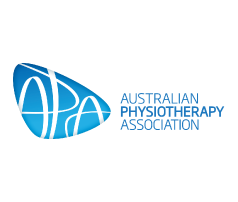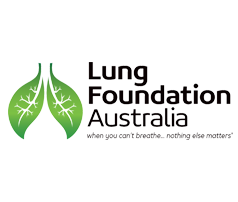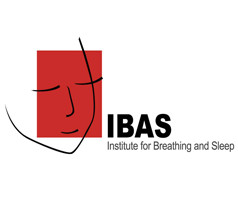Case Study
Subjective history
Single woman – lives alone
Referred to the out-patient clinic for a second opinion – condition deteriorating
Past history of childhood pneumonia and whooping cough, never smoked
Current issues – bronchiectasis, osteoporosis, GORD, OA knees, chronic sinusitis – not seasonal
Bronchiectasis diagnosed approximately 20 years ago – productive cough since a teenager
Respiratory medications – Seretide, Ventolin, recently commenced Azythromycin
Approximately 5 exacerbations requiring antibiotics over the past 12 months
Stress incontinence with coughing and exercise
Appears to be adequately hydrated – drinks 2 litres of non-caffeinated fluids per day
Exercise – limited by shortness of breath and generally feeling unwell. Likes to play golf but too unwell to play at present. Able to walk approximately 50 metres at a moderate pace before stopping to rest due to shortness of breath.
Describes her main issues as – excessive sputum and extreme lethargy. St George Respiratory Questionnaire – described her health as Very Poor
Sputum – approx. 1 cup per day, tenacious and muco-purulent, nil haemoptysis, difficult to expectorate, sputum isolate – haemophilus influenza. Reports that she coughs throughout the day which she finds very tiring and embarrassing.
Nil previous physiotherapy input. Current airway clearance routine – coughing
Objective history
HRCT – bronchiectasis right middle lobe, left and right lower lobes. High grade peri-bronchial scarring. Significant bronchiolitis. Right middle lobe chronically collapsed. Mucous plugging both lower lobes
CT sinus – Extensive pan-sinusitis
LFT’s – FEV1 – 0.88 (38%), FVC 1.87 (62%) – consistent with a very severe mixed obstructive and restrictive ventilatory defect
SpO2 – 90% at rest. HR 96
Effective, productive cough. Upper chest breathing pattern (reported that she avoided diaphragmatic breathing as it made her cough), predominantly a mouth breather. She has difficulty breathing through her nose as it is usually blocked
No gait aids. Thoracic mobility limited by muscle tightness
Metered dose inhaler technique poor – currently not using a spacer
Medical strategies prescribed:
Stop Azythromicin at present – review further use depending on isolation of Pseudomonas aeruginosa
Salbutamol 2 puffs via spacer BD
Amoxil 500mg TDS for a week – due to Haemophillus
Rulide 300mg daily for 2 months – bronchiolitis
Nasonex and Sinus rinse daily to both nostrils
Flu vaccination
Physiotherapy airway clearance routine prescribed:
Two puffs Ventolin via a spacer. Correct technique taught.
Nebulise 5mls isotonic saline via Pari SX compressor and Pari Sprint Star nebuliser – BD. Instructed to inhale through a mouthpiece and to vary the size of her breaths, with occasional breath holds, to encourage deposition throughout the lungs
Oscillating PEP with flutter device – 6 cycles of 6-8 breaths – BD
Following flutter – 3 levels of forced expiration technique (FET)
Tried to teach autogenic drainage but too much sputum at present and lungs too twitchy – unable to suppress her cough. Will re-visit in the future
Sinus rinse – BD
Daily aerobic exercise. Commence with a walk around her block (approximately 200 meters) twice a day, with stops every 50 metres – gradually increase the distance by 50 metres each week. Aim for Borg score of 3 with interval training, increasing the distance between stops as able.
Reviewed a week later:
Feeling much better. Less coughing and more energy
Checked metered dose inhaler technique and flutter technique – no issues
Reviewed autogenic drainage – coped better this week. Able to manage the three stages of breathing and to suppress her cough. Appears to be clearing the peripheral airways effectively with this technique. Encouraged her to continue with this technique
Taught her the correct breathing pattern. Unable to do this last week as a diaphragmatic breath caused an irritable cough. Instructed her to practice relaxed diaphragmatic breathing for 10 minutes daily, through her nose, if possible, following sinus rinsing
Commenced thoracic mobilising exercises – trunk rotations and side flexion – to be practiced daily x 10
Reviewed 6 months later by physio:
St George Respiratory Questionnaire – described her health as between Good and Very Good (Very Poor six months ago) but still getting an exacerbation every 2 to 3 months
Has returned to golf (in a cart), walking daily for 20-30 minutes with 2 rests
Techniques not being practiced as prescribed. She stopped nebulised saline as it caused her throat discomfort (her technique was incorrect), flutter being performed at very low lung volumes and autogenic drainage missing stage one
Re-taught techniques
Breathing pattern improved and predominantly nose breathing
Plan (BD) – following Ventolin – nebulise 5mls normal saline, flutter 6 cycles 8 breaths, autogenic drainage, focussing on low lung volumes, sinus rinsing, FET during the day PRN. Continue with daily walks
Reviewed a further 6 months later:
Nil exacerbations over the past 6 months – reported that she was feeling 100% better
Playing 9 holes of golf without a cart, walking for 20-30 minutes daily without rests
Generally feels a lot better with significantly more energy
Not coughing between morning and evening physiotherapy sessions
Sputum decreased to 1/2 cup per day, not as tenacious and easy to expectorate
AC routine – nebulised saline (0.9%) BD, flutter in the evenings after saline – 8 cycles of 8 breaths followed by FET, AD in the mornings after saline, FET during the day as required
Rationale for physiotherapy strategies:
Initially taught her several airway clearance techniques as she lived 100 kms from the hospital and was not able to attend regularly for review. She was also very unwell and needed intense physiotherapy to clear her airways. As she had not had any previous respiratory physiotherapy input, she was not adequately clearing her sputum and was consequently experiencing repeated exacerbations. She was in a downward spiral.
She was retired so had time during the day to do airway clearance.
All of the chosen airway clearance techniques are not linked to any gastric reflux events.
Nebulised saline – due to haemophilus influenza and tenacious sputum
Flutter – long standing disease and unstable airways. Tenacious sputum. Chose small number of repetitions due to shortness of breath and poor lung function. Gradually increased the dose.
Autogenic Drainage (AD) – Important for her to minimise stress on the pelvic floor. Frequent exacerbations, even when well medicated, indicated small airway sputum retention. Autogenic drainage is very effective in the presence of a large amount of sputum and where, due to significant small airway disease and consequent collapse, the small airways can be difficult to effectively clear. Progressed her to doing AD whilst she was nebulising saline.
Breathing training – a shallow breathing pattern inhibits airway clearance. A diaphragmatic breathing pattern will enhance expiratory flow and airway clearance. Mouth breathing dries the airway and may dehydrate the sputum, inhibiting airway clearance. Nose breathing will humidify and filter the airway.
Exercise – interval training due to lethargy and de-conditioning. Still need to aim for at least Borg score of 3. Gradually increase until managing 30 minutes per day with intervals of a Borg score of 3-4.
Being prescribed appropriate airway clearance techniques and medications, Mrs D was now in an upward spiral with significantly improved quality of life. Her friends noticed that she no longer coughed during the day and that she was less short of breath when she played golf.
Needs annual review to:
Check use of medication devices
Check airway clearance routine – ? change prescription and/or devices
Check exercise tolerance and prescription
Check nebuliser – ? needs servicing or replacing








